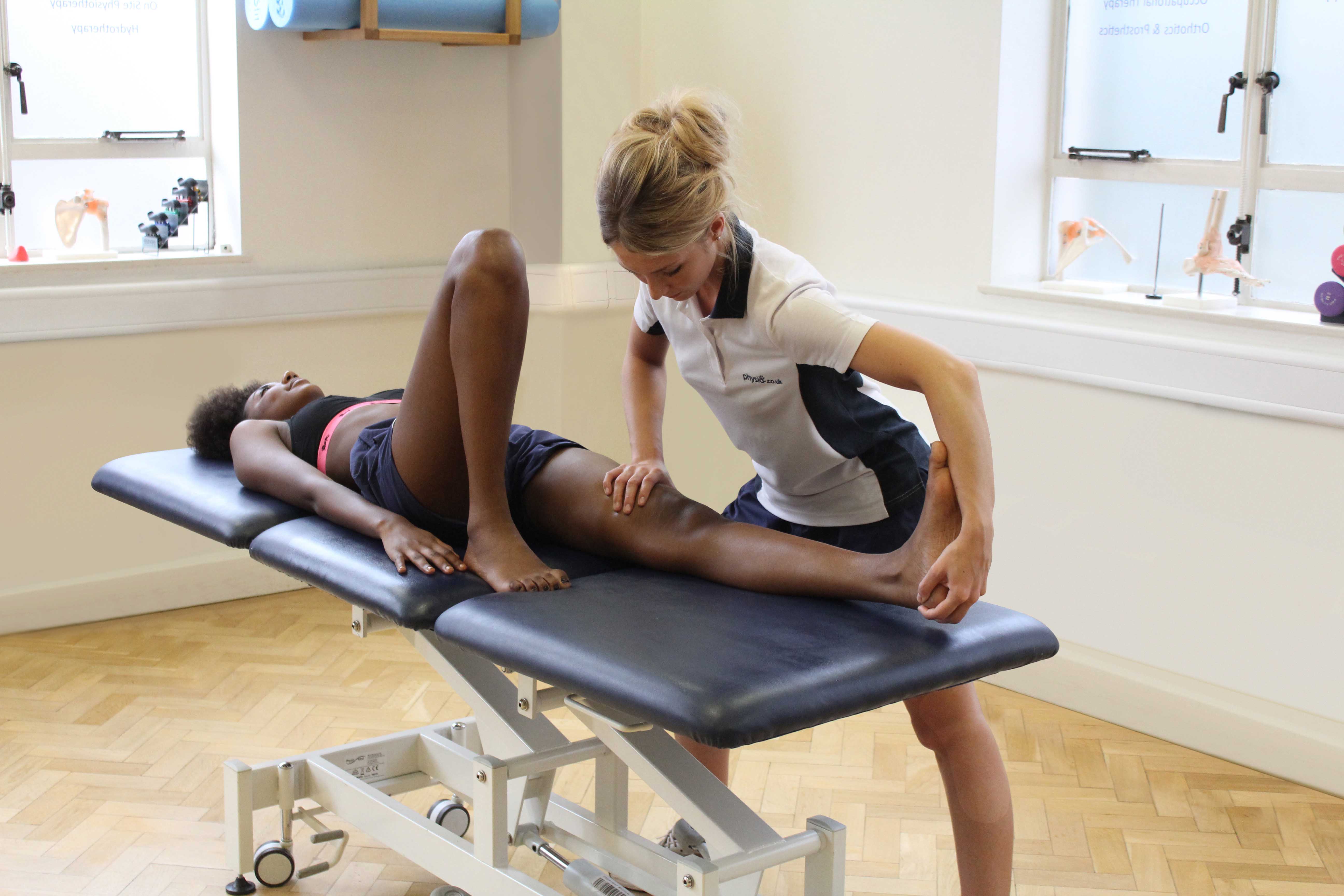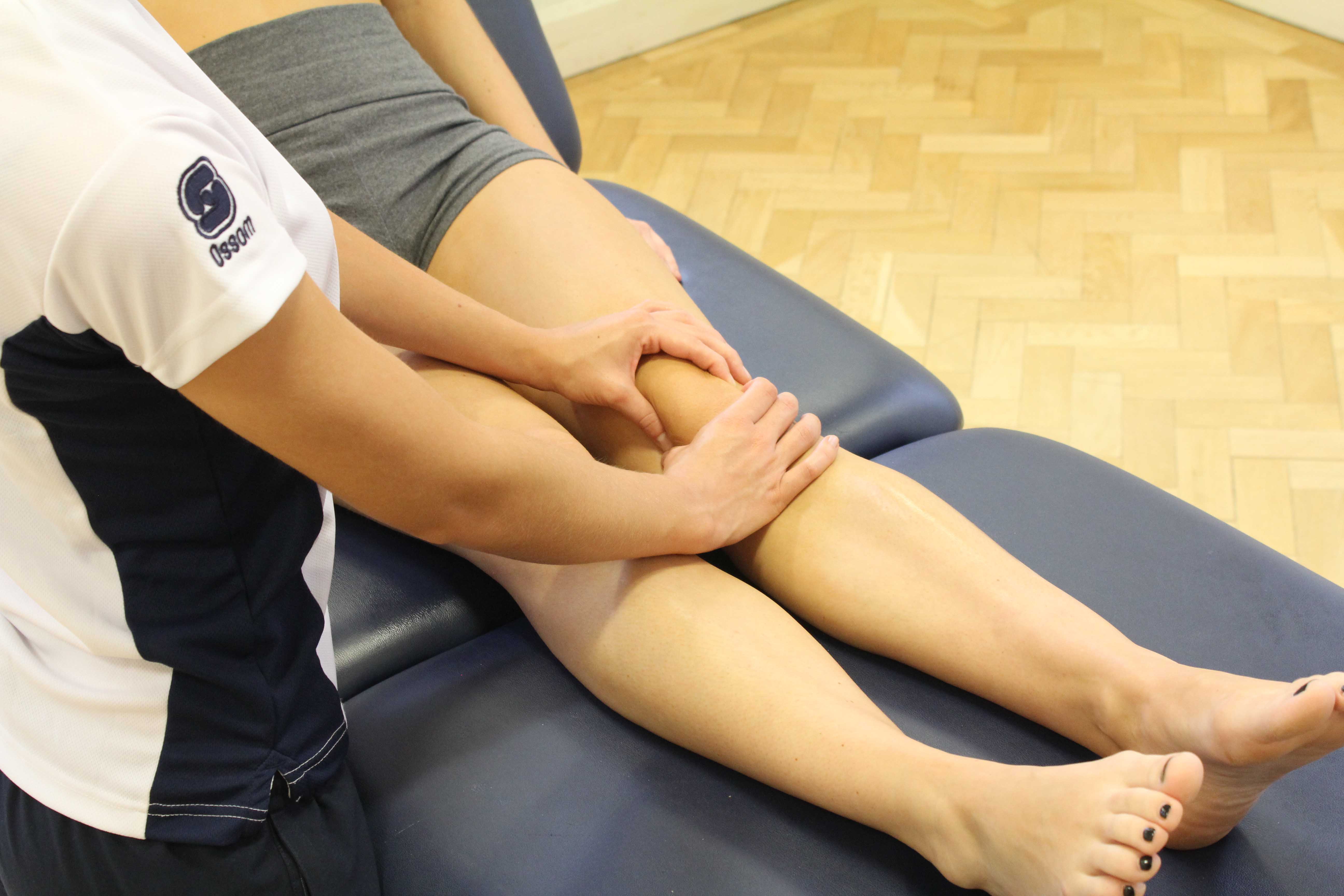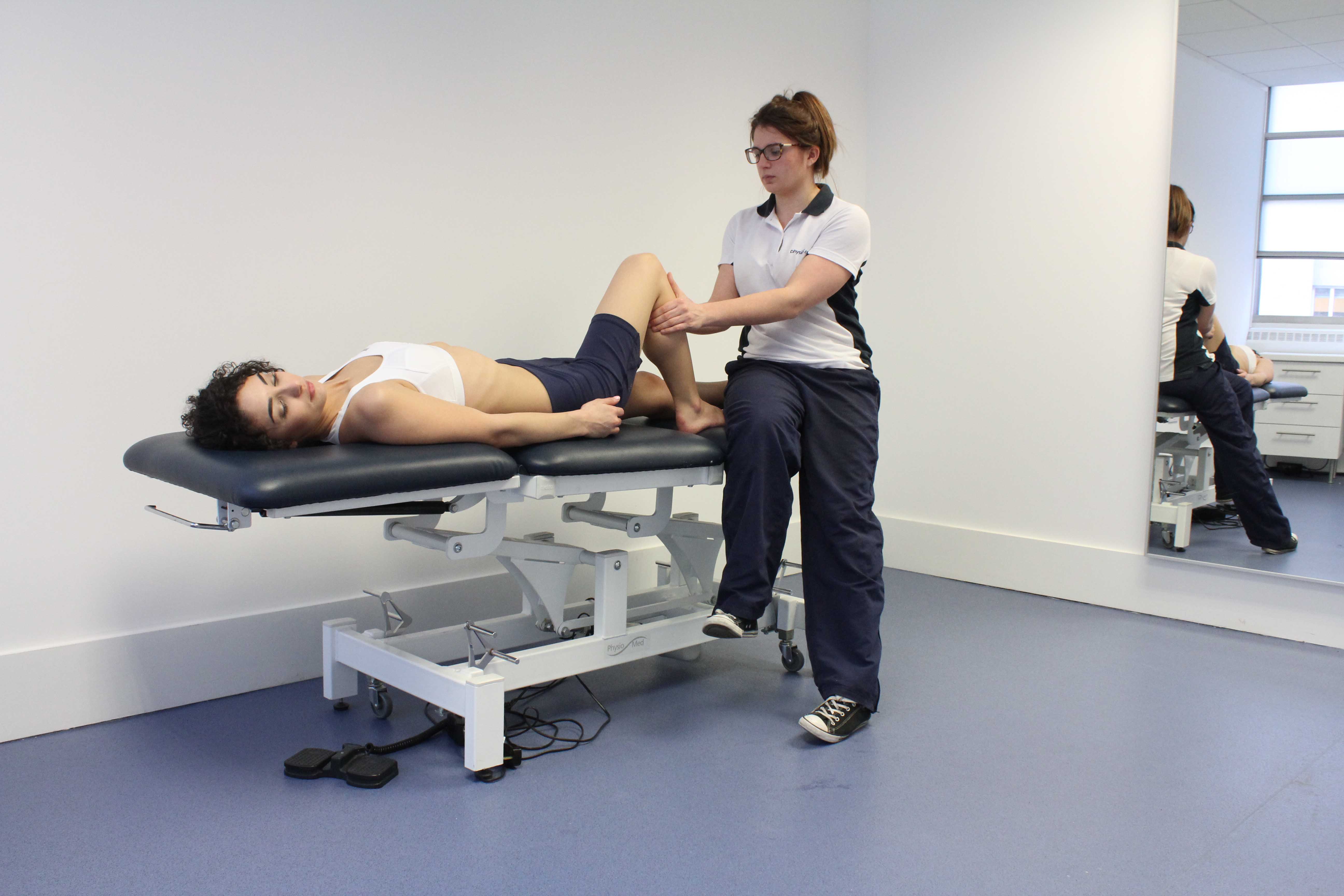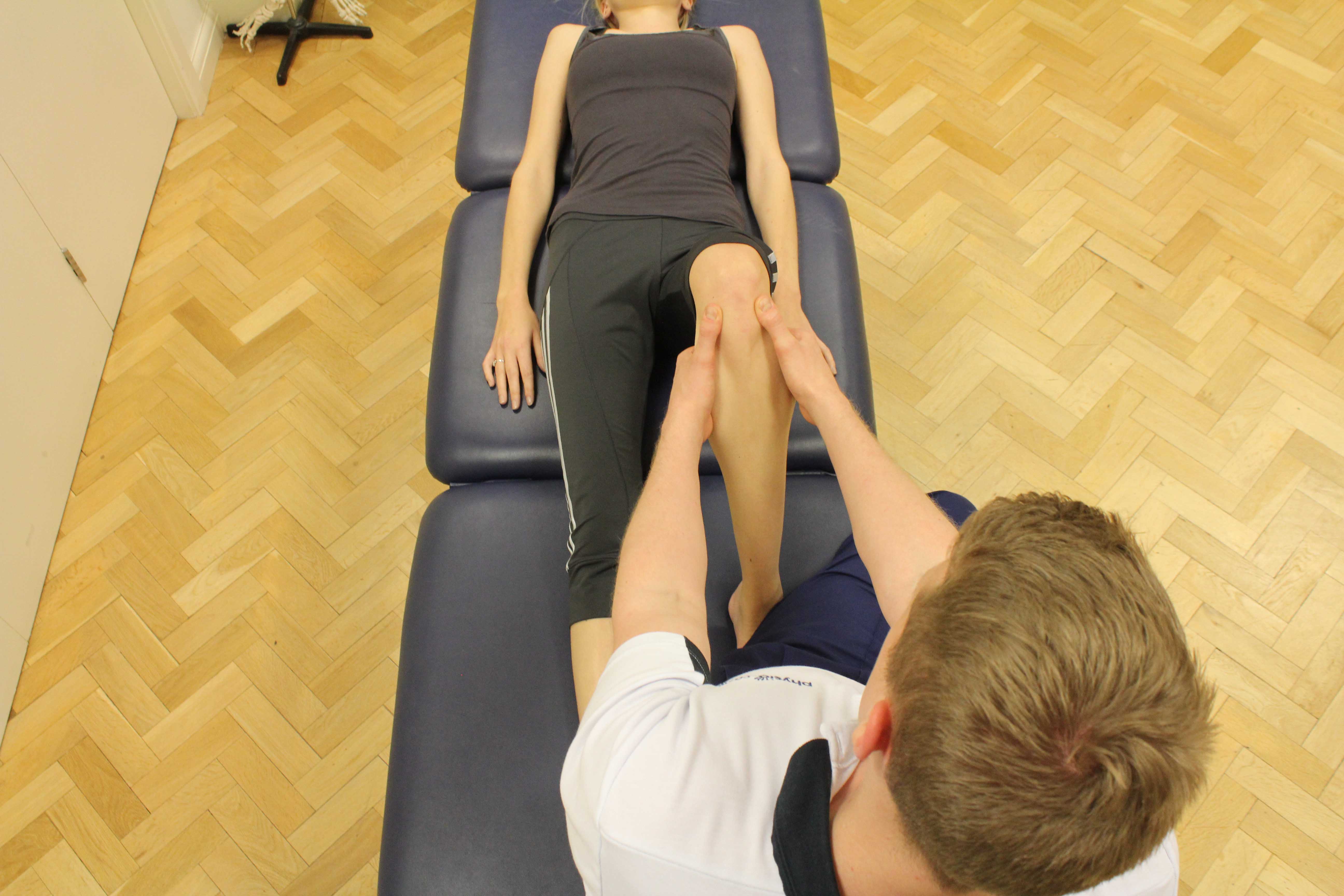The patella (knee cap) is a sesamoid bone that is embedded in the quadriceps tendon at the front of the knee. Fractures to the patella can occur when the force applied to the patella is stronger than the bone either by a direct blow to the knee cap or as a result of indirect forces from a powerful contraction of the quadriceps.
A fracture to the patella can either be displaced (out of position) or undisplaced (in position). If the fracture is undisplaced or minimally displaced then surgery may not be required. If a fracture to the patella is significantly displaced then ORIF surgery will be necessary.
During ORIF surgery, an incision is made over the front of the knee joint. The fractured ends are then realigned (open reduction) and held in place with a combination of pins, screws, and wires (internal fixation).
It is important to undergo ORIF immediately after suffering a displaced fracture of the patella as this will reduce pain, aid the healing process and prevent any further problems or injuries in the future.
 Above: Mobilisations of the knee joint during an assessment by a MSK therapist
Above: Mobilisations of the knee joint during an assessment by a MSK therapistSymptoms after ORIF of the patella
After ORIF of your patella you will experience pain, swelling, stiffness and decreased range of movement in your knee. Depending on the stability in your knee, a brace may be required for first few days after your surgery. Passive range of movement (assisted) is encouraged as soon as possible and you may be put on a continuous passive motion (CPM) machine which keeps your knee mobile and aids healing. During your hospital stay, a physiotherapist should see you immediately after your ORIF surgery and assist you with a variety of bed exercises. Once able, you will be given elbow crutches and encouraged to partially weight bear for the initial stages of your recovery. You will also be unable to drive for up to 6 weeks after your surgery.
 Above: Patella mobilisations performed by MSK Physiotherapist
Above: Patella mobilisations performed by MSK PhysiotherapistPhysiotherapy after ORIF of the patella
Immediate physiotherapy is essential once you have undergone ORIF of your patella to reduce pain, swelling and stiffness and to return the range of movement in your knee. Once you have been discharged from hospital, your physiotherapy should continue with Physio.co.uk to guarantee the return of full function in your knee and prevent the likelihood of any further problems in the future.
 Above: Mobilisations of the knee joint by a MSK therapist
Above: Mobilisations of the knee joint by a MSK therapist1-4 weeks
During the first month of your physiotherapy programme with Physio.co.uk the main aims are to control your pain and swelling, passively improve range of motion and strengthen the muscles around your knee. It is also important to protect your knee from any excessive movements to prevent any further damage. Physiotherapy at this stage will include:
- Cryotherapy
- Patellar mobilisation as tolerated
- Passive (movement is assisted by physiotherapist) range of movement exercises
- Isometric (hold) quadriceps strengthening exercises
- Isometric (hold) hamstring strengthening exercises
- Stretching of hamstrings and quadriceps
- Partial weight bearing exercises
- Weight shifting activities
- Hip and ankle strengthening exercises
5-8 weeks
During the second month after your ORIF surgery your physiotherapy programme with Physio.co.uk will focus on pain management, gait re-education, improving proprioception (balance), strengthening muscles and increasing the range of movement in your knee. Physiotherapy activities will include:
- Continuation of modalities for pain control (ice, medication etc)
- Patella mobilisation
- Progression of passive range of movement exercises
- Introduction of active (unassisted) range of movement exercises
- Continuation of strengthening and stretching exercises for quadriceps and hamstrings
- Progression of weight bearing – full weight bearing activities
- Gait re –education training
- Proprioception and balance training
- Hip and ankle strengthening
- Stationary bicycle as tolerated
- Hydrotherapy
8-12 weeks
Following successful rehabilitation from previous weeks, after two months of rehabilitation you should now have minimal if no pain and swelling, you will be fully weight bearing and you will have seen a marked improvement in the function of your knee. The main goals of your physiotherapy programme with Physio.co.uk at this stage will now focus on the continuation of previous exercises, maintaining correct gait patterns, self management of symptoms, good stability and tracking of your patella, full range of movement and increased ambulation (walking) distance. The physiotherapy intervention with Physio.co.uk will include:
- Continuation of strengthening and stretching of leg muscles
- Patella mobilisations
- Full active range of movement exercises
- Ambulation exercise (walking)
- Gait training
- Proprioception (balance) training
- Stationary bicycle (increased resistance as tolerated)
- Hydrotherapy
 Above: Mobilisations of the knee joint by a MSK therapist
Above: Mobilisations of the knee joint by a MSK therapistSummary
Open reduction and internal fixation of the patella is a surgical procedure to treat a fractured patella. It consists of realigning the fractured segments and fixing them using screws or pins. ORIF is necessary for a displaced (out of position) fracture of the patella to stabilise and correct the injury. If the fracture is undisplaced and the patella remains in position then a conservative (non-surgical) physiotherapy approach is recommended. ORIF surgery is essential as this will reduce pain and swelling and reduce the chance of long term damage and loss of function in your knee. Physiotherapy is critical immediately after you have undergone ORIF as this will ensure the success of your surgery, reduce pain and stiffness aid in the healing of your fracture and improve range of movement. A personal physiotherapy programme with Physio.co.uk will also guarantee the return of full function in your knee and get you back to what you love to the most as soon as possible. Physio.co.uk now on 0330 088 7800 for more information or to book an appointment!

 0330 088 7800
0330 088 7800


































